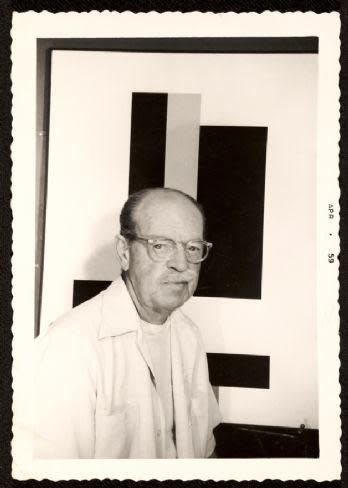John McLaughlin (1898-1976) has been said to be one of the “first great artists to emerge out of Southern California following WWII”. He did not begin painting seriously until his was nearly fifty and was predominantly self taught, which make his achievements all the more impressive. His work, along with other hard-edge painters such as Frederick Hammersley, and Lorser Feitelson, tends to fly under the radar—eclipsed by the stereotypical wild gestures of the Abstract Expressionists from the same time period. But McLaughlin and the hard edge painters of the 50s and 60s provide a counter to the 8th street style, and gave an equally as important contribution to development of distinctly American art, and in particular West coast style.
McLaughlin was born in Sharon, Massachusetts in 1898 to superior court Judge John Dwyer Mclaughlin. His mother, one of his early artistic influences, took he, and his seven siblings to the Boston Museum of Fine arts frequently, where he was exposed to their extensive collection of Asian art. His parents frequently hosted Japanese students, and Asian culture was a strong presence early in his life. This continued into his adulthood. After serving in the Navy in WWI, he and his wife moved to Japan in 1935, where he studied the language and culture. This informed the rest of his professional career—while it varied from intelligence work, to owning a gallery in Boston, to translating, and teaching, it always was rooted in his foundation of Asian studies.
When McLaughlin committed himself fully to painting much later in his life, he based his philosophies on classical Japanese and Chinese paintings, in addition to drawing from artists such as Piet Mondrian and Kazimir Malevich. He often spoke of the “Marvelous Void”, and strove to free viewers to draw their own conclusions from his simple, often bilaterally symmetrical pieces.
“My purpose is to achieve the totally abstract. I want to communicate only to the extent that my painting will serve to induce or intensify the viewer’s natural desire for contemplation without the benefit of a guiding principle.” (John McLaughlin, from the 1962 Felix Landau Gallery catalog)
